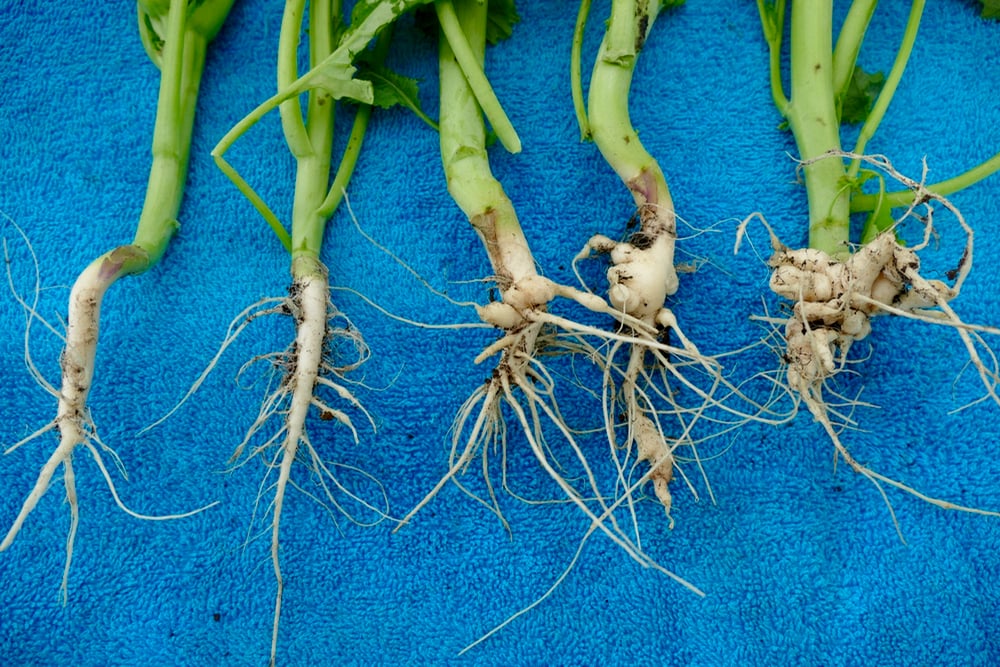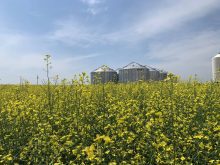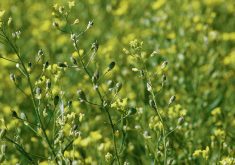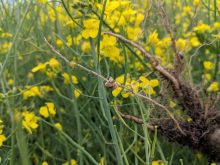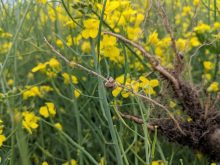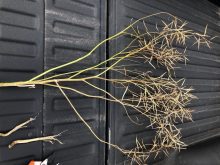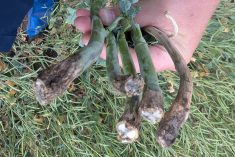Be proactive against clubroot in canola. It is not a matter of it might be coming, it is already here. If it hasn’t affected your county or your farm yet, the question isn’t about if it will appear, but really about when. That’s the message Alberta farmers were hearing late last year, as part of a series of one-day Alberta Canola workshops that covered several production and management topics, with an update on clubroot mitigation toping the agenda.
Read Also

Claas brings 1000 Series SP forage harvesters to Canada
In mid-August, Claas unveiled its new line of Jaguar forage harvesters at an event in Visalia, California, deep in the heart of that state’s dairy region.
While the disease has potential to cripple western Canadian canola production, it is not a doomsday scenario, says Autumn Barnes, southern Alberta agronomy specialist with the Canola Council of Canada. However, it is critical that producers apply proper agronomic and management practices, now, she says. “I don’t talk about management practices in terms of ‘if’ clubroot appears, but at this stage it is really about ‘when’ it appears on your farm,” says Barnes. “Producers are urged to adopt a number of agronomic and management practices that will help to mitigate the impact of the disease.” Those proactive steps may not eliminate the risk, but certainly can slow the risk of yield-reducing disease levels developing and may just hold it at bay.
The clubroot disease pathogen (and there are several different strains) is believed to have a long history in Canada. First identified in eastern Canada in the early 1900s it has gradually moved west — in some soils it’s probably been around for decades. It is a disease prone to develop in cruciferous crops, which includes canola. With widespread production of canola in the past 30 years, and particularly with many farmers following tighter canola rotations in recent years (back to back or once every two years in rotation) basically the sleeping giant has awoken.
Since 2003 in Alberta the disease has spread from a few hot spots in a couple counties around Edmonton to moderate to high infestations across most of northern and central Alberta. In south-central and southern Alberta, a few infected fields have been found in Special Area 3 on the east side of Alberta, the disease was found in fields in Mountainview County surrounding Olds in 2016, it has been found in Newell County in the Brooks area, and last year a case was identified in Rockyview County which surrounds Calgary.
While this workshop presentation was given in Alberta, this is a Western Canada disease threat. Manitoba has several municipalities in the central part of the province where relatively high disease levels have been found in farmer fields, there are considerably more rural municipalities with moderate levels and about an equal number of rural areas with low levels of disease. Saskatchewan found its first clubroot infected soil sample in 2008 while a 2018 survey showed more than 40 fields primarily in the northern part of the province infected with the disease. All prairie provinces are on alert.
Spore count numbers game
Managing clubroot is somewhat of a numbers game. Low levels of what’s known as the resting spores of the clubroot pathogen can and very well may be in the soil and not cause any harm to a canola crop — the adage of letting a sleeping dog lie, applies. However, under the proper environmental conditions, or if those spores have the opportunity to attach themselves to susceptible host plants in successive growing seasons, they can begin to multiply.
Back-to-back or tight canola rotations is one practice that can increase risk of disease development, but canola isn’t the only culprit. Other host plants, part of the cruciferous family, can include volunteer canola, and mustard, along with common weeds such as wild mustard, stinkweed and flixweed. The disease pathogen can flourish and multiply on any of these plants. The disease spores are also easily moved through contaminated soil carried into a field on equipment, or blown in on airborne eroding soil.
A proper crop rotation of at least two years and ideally three or four years between canola crops is recommended says Barnes, but also pay attention to control measures to remove other non-crop plants such as canola and mustard crop volunteers and weeds.
Back to the numbers game: If a soil test for example reveals the resting clubroot spore count at about 1,000 or fewer spores per gram of soil (about a teaspoon) it’s not an issue. The spore population isn’t really going to affect canola crop yield until it reaches about 10,000 spores per gram, but after that the sky is the limit and the impact on the crop increases exponentially. Soil samples on moderate to heavily infected fields can produce spore counts of several hundred thousand, several million and even a billion or more spores in a gram or teaspoon of soil. At the moderate spore-count range yields can be reduced while at the upper range yields can be completely eliminated.
“The goal is to keep spore loads low and local,” says Barnes. Spore counts will begin to decline if the pathogen has nothing to feed on, so a crop rotation of at least two years between canola crops and more ideally three or four years will help reduce and keep numbers low.” And of course proper weed control during and between canola crops is important too. If an extremely high pathogen count is detected it may even take more years — seven or eight — to get the disease count down to that tolerable 1,000 spores per gram or less.


